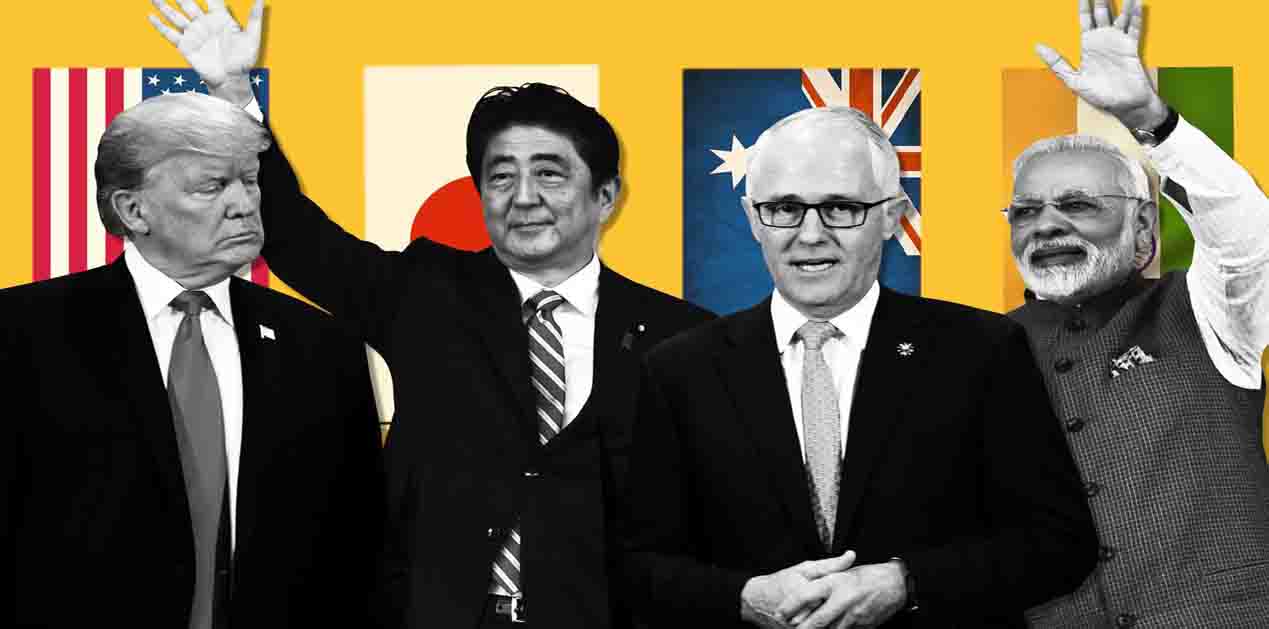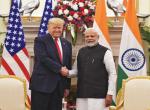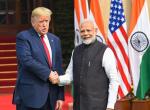China’s rapid march westward through the Indo-Pacific region appears to be running into rough weather. Australia, India, Japan and the United States, the members of the ‘Quad’, an ‘association of like-minded nations’, have established a Quadrilateral Security Dialogue and chosen to collectively express concerns over China’s flagrant abuse of international law and rules-based order in the oceans. Their approach towards China’s regional assertiveness is hardening, and last month the naval leaders of the Quad member countries participated in a panel discussion at the Raisina Dialogue in New Delhi to express anxiety over the growing Chinese assertiveness in the Indo-Pacific region. Admiral Harry Harris, Commander, US Pacific Command labeled China a “disruptive transitional force” and called on the members of the Quad to take “courageous decisions in 2018”.1
New Stakeholders
The above sentiments have echoed in the United Kingdom and British Defence Secretary Gavin Williamson has been unequivocal of his country’s support for ‘what the US has been doing’ in the South China Sea.2 He announced plans to dispatch HMS Sutherland, an anti-submarine frigate currently on a visit to Australia, to sail on way back home through the South China Sea stating that his navy had the “right to do that”.3 He also encouraged Australia to join Britain to “assert our values” in the South China Sea and do more “to exercise leadership.” This will not be the first time that a British Royal Navy ship has sailed through the South China Sea; in 2014, HMS Daring, a Type 45 destroyer, had transited the area without challenging China’s territorial claims over the disputed islands.
The Quad members’ concerns are also supported by France through a bilateral mechanism. Last month, Japan and France agreed to work together to ensure ‘a free and open Indo-Pacific region’ being “a common interest” of the two countries.4 They also expressed concern over the situation in the East and South China Seas particularly island-building and construction of military outposts by China. A significant agreement between Japan and France under consideration is the Acquisition and Cross-Servicing Agreement (ACSA) which facilitates military forces of the two countries to mutually provide logistical supplies and services. Besides, the navies of the two countries are programmed to hold joint exercises during the French frigate FNS Vendemiaire visit to Japan this month.
Chinese Reactions
These developments have not gone unnoticed in Beijing. The Chinese scholars have in the past accused the members of the Quad of forming a NATO like alliance to contain China. Responding to the Britain’s decision to send the warship to the South China Sea, the Chinese Foreign Ministry spokesman Geng Shuang cautioned other countries to “stop stirring up trouble”.5 The popular state-run Global Times categorized the announcement as an act of ‘provocation’ and advised “Royal Navy should behave modestly when passing through the South China Sea,”6 Interestingly, it ridiculed Britain’s Ministry of Defence of “trying to validate its existence and grab attention”, derided the Royal Navy about its leaky aircraft carrier and challenged it “to come all this way to provoke China,”
Quad Plus
China has not hidden its maritime ambition to build a powerful navy to sail across the oceans, secure overseas bases, and project power. 7 Such hegemonic determinations could potentially invite a collective response by the ‘Quad’ members including the possibly of expanding the current membership in the form of ‘Quad Plus’ which could include France and the UK. There are at least four reasons for a ‘Quad Plus’. First, the existing members of the ‘Quad’, individually and collectively, have stated that it is in their national interest to ensure ‘a free and open Indo-Pacific region’. Similar thoughts have resonated in London and Paris, and the British and French political leaderships have made known their intensions to support upholding freedom of navigation and trade along the Indo-Pacific routes.
Second, the ‘Quad Plus’ collectively possess significant naval power which could overwhelm the rising profile and capability of the PLA Navy individually or in concert with the Russian Federation Navy which is making a strong comeback in the Pacific Ocean with latest modern warships, submarines and advanced infrastructure to support these.8
Third, it is true that the US may not be in a position to bring all its political and strategic capital to bear on China at all times given the variety of its other global commitments. In this context, British Defence Secretary’s observation that the “US is looking for other countries to do more” merits attention, and could be an encouragement for the Quad members to bring together likeminded states with ‘common values’ to ensure a peaceful and prosperous Indo-Pacific.
Fourth, the Quad Plus is not a formal military alliance but a natural congregation of likeminded states who are engaged with each other through bilateral and multilateral partnerships and alliances. The current security dynamics offers opportunities for Quad Plus members to work together to ensure order at sea, protect sea lanes across the Indo-Pacific as also challenge any hegemonic ambitions of China.
The Dilemma
However, there are a few challenges that could preclude the formation of a ‘Quad Plus’. These span the political, diplomatic and economic engagements of individual Quad or ‘Quad Plus’ member countries with China. For instance, British Defence Secretary has stated that “Australia and Britain see China as a country of great opportunities” but is cautious on the strategic front given that his country is not “blind to the ambition that China has and we've got to defend our national security interests.”
Similarly, India has significant economic engagements with China with bilateral trade pegged at US $ 70 billion. But, it also has a simmering border dispute with China the latest being a 10-weeks long face-off between the two militaries on the Doklam Plateau, a tri-border among China, India and Bhutan, in the Himalayas, Besides, the China-Pakistan military and nuclear nexus poses enormous restraints on New Delhi.
The recent Australian Foreign Policy White Paper also takes a very cautious line and is careful not to demonize China. It notes that Australia is committed to “strong and constructive ties with China” and to “strengthen our Comprehensive Strategic Partnership for the benefit of both nations” 9, despite the fact that the Australian Security Intelligence Organisation (ASIO) listed China as an “extreme threat,” the highest level on a secret country-by-country counter-intelligence index”.10
Finally, China may have creatively leveraged its optimal economic engagements with the Quad members into strategic gambits; but it is not safely perched to confront them. In essence, Beijing is confronted with a strategic dilemma amid challenges posed by ‘Quad Plus’ that may checkmate its ambitious strategic overdrive as also potentially increase tensions in the region adding to Beijing’s own worries.
(The author is former Director National Maritime Foundation, New Delhi)
Notes
1. “China a disruptive force in Indo-Pacific region: US Pacific Command chief”, The Economic Times, 18 January 2018.
2. Neil Conner, “Britain plots confrontation with Beijing by sending Royal Navy warship through disputed South China Sea”, The Telegraph, 13 February 2018.
3. “British warship to sail from Australia to South China Sea”, The Strait Times, 14 February2018.
4. Diasuke Kikuchi, “Japan and France agree to deepen maritime security ties in ‘two plus two’ meeting”, The Japan Times, 26 January 2018.
5. Neil Conner, “Britain plots confrontation with Beijing by sending Royal Navy warship through disputed South China Sea”, The Telegraph, 13 February 2018.
6. “Chinese paper says UK trying to grab attention with South China Sea mission”, Reuters, 14 February2018.
7. “Djibouti base won’t be the only one, ex-PLA admiral says”, Asia Times 13 February 2018.
8. Rakesh Krishnan Simha, “Russian Pacific Fleet’s resurgence sets off alarm bells in Washington”, Russia Beyond, 06 February2017.
9. “China in Australia's Foreign Policy White Paper”, http://www.australiachinarelations.org/content/china-australias-foreign-policy-white-paper (accessed on 15 February 2018).
10. Carlyle Thayer, “World powers are scrambling for influence over Asian maritime routes”, The Security Times, February 2018.
(Views expressed are of the author and do not necessarily reflect the views of the VIF)
Image Source: https://www.ft.com/content/5355ee2a-c869-11e7-ab18-7a9fb7d6163e











Post new comment